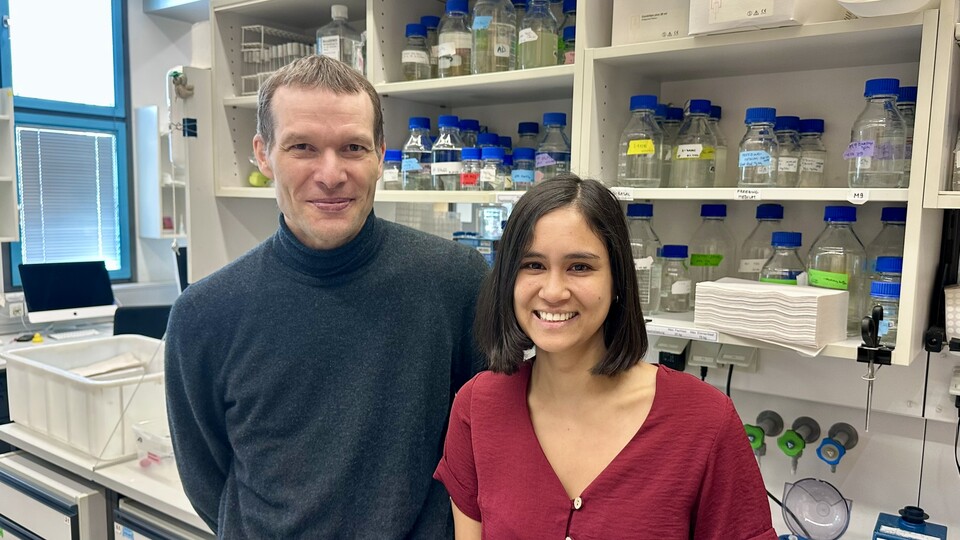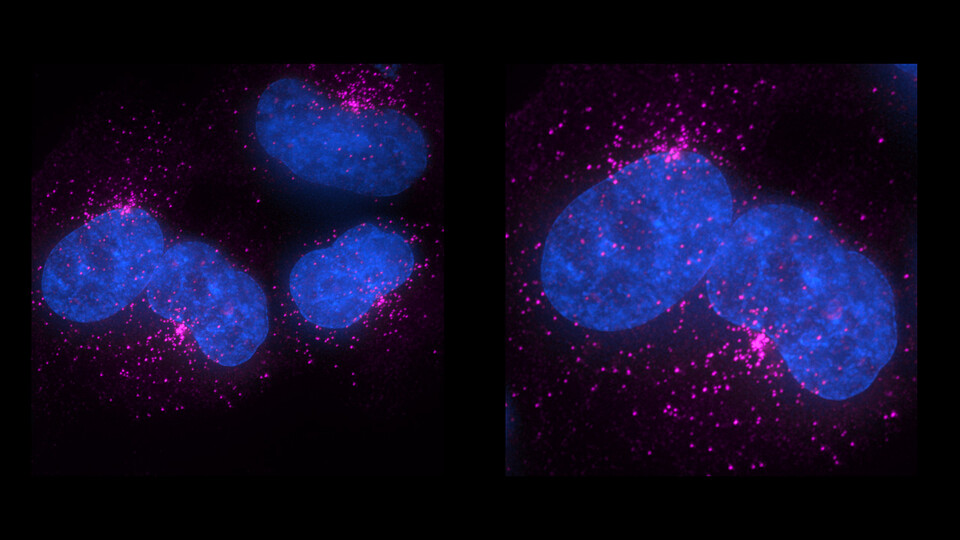

Microtubule-organizing centers (MTOCs) regulate the formation and organization of microtubules, which are essential for cellular structure and function. Centrioles, a core component of MTOCs, assemble centrosomes to facilitate cell division and serve as the foundation for cilia, which are crucial for movement, environmental sensing, and signaling. Surrounding centrosomes and cilia in vertebrate cells, centriolar satellites are thought to facilitate protein trafficking, supporting both centrosome function and ciliogenesis. While human PCM1 has long been associated with centrosome assembly and protein transport, its precise function has remained elusive. Characterizing the behavior of its Drosophila melanogaster ortholog, Combover (CMB), forced the Dammermann lab to re-evaluate the role of centriolar satellites.
“The role of PCM1 has proven difficult to establish, since its depletion causes a range of weak but highly pleiotropic phenotypes linked to centrosome duplication, ciliogenesis, and beyond”, explains group leader Alex Dammermann. “Then we discovered CMB – its Drosophila counterpart – as well as orthologs across diverse eukaryotes, hinting at a highly conserved role.” This finding was particularly striking because CMB-containing centriolar satellites were found not to be enriched in the vicinity of centrosomes or cilia, despite clear phenotypes associated with both structures. PhD student and first author Claudia Pachinger adds: “If PCM1 were truly essential for transporting key components, its absence should cause severe defects – but it doesn’t. This contradiction, and the absence of any directed movement of the satellites in flies, forced us to rethink the trafficking-based model and explore a new hypothesis.”
Using a technique called BioID, in which proteins in the molecular neighborhood of CMB are labeled with the small molecule biotin, the scientists mapped the interactome of CMB in whole flies and Drosophila S2 cells. The data revealed an unexpected enrichment of proteins involved in translation and translation-coupled protein quality control, suggesting that centriolar satellites might be involved in the synthesis of centrosomal and ciliary proteins. To test this idea, the researchers employed puromycin to label nascent protein chains and confirmed that satellites are, indeed, sites of active protein synthesis. “We even identified centrosomal mRNA localized to satellites, strengthening the case for a direct role of satellites in translation”, explains Claudia. The team then extended their investigation to human cells, where prolonged puromycin treatment led to a complete loss of satellite signal for centrosomal and ciliary clients, suggesting that satellites harbor proteins recently produced at these sites.
This study highlights the power of model organisms – without insights from Drosophila, the link to protein translation and protein quality control might not have been made. “If the association of these proteins with satellites was purely random, they should not have been identified in both systems – but they were”, explains Alex. “This conservation across millions of years of evolution gave us the confidence to investigate a link that otherwise might have seemed far-fetched: that satellites aren’t just protein granules near centrosomes but sites of protein synthesis essential for ciliogenesis and centrosomal function.”